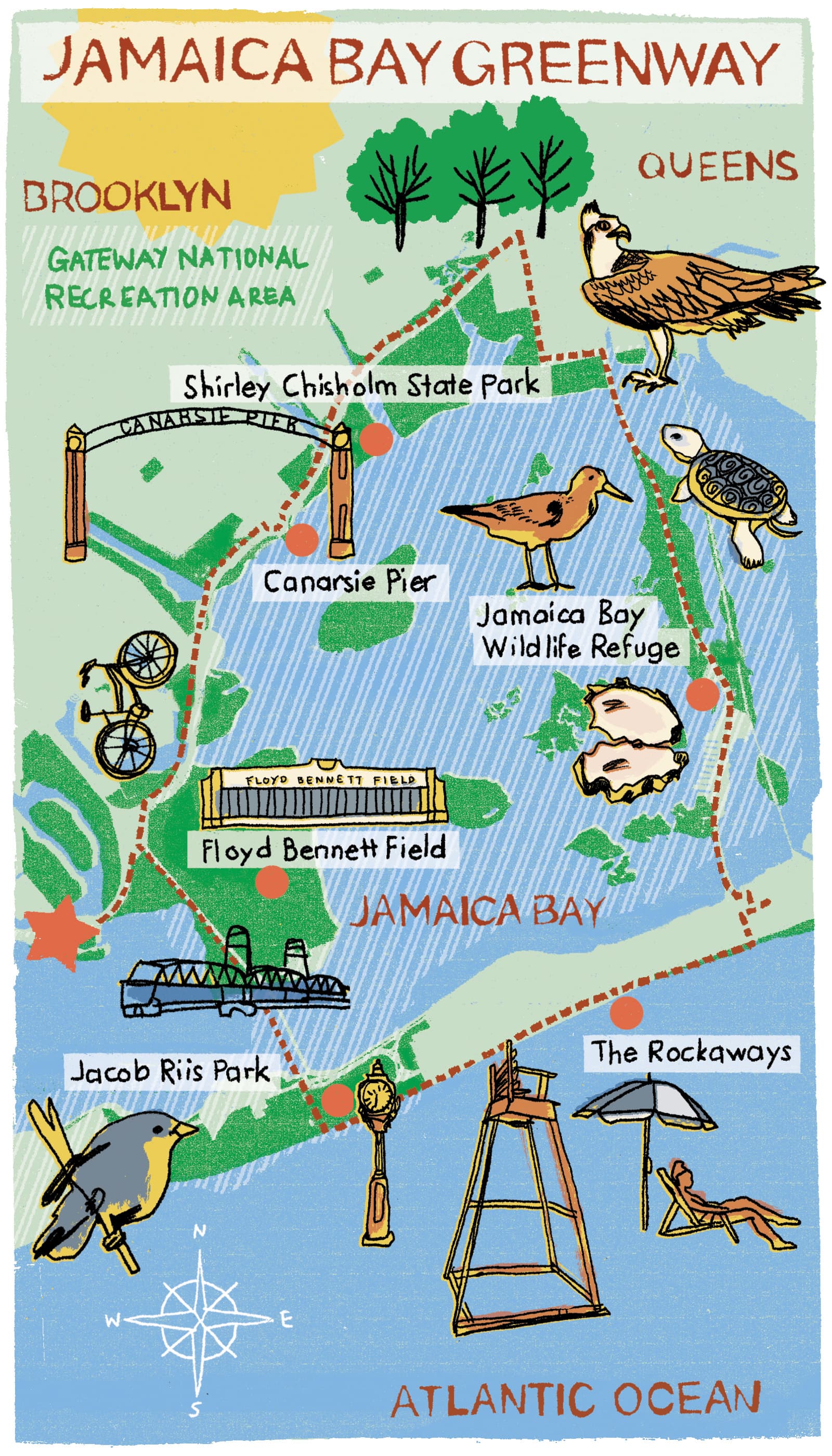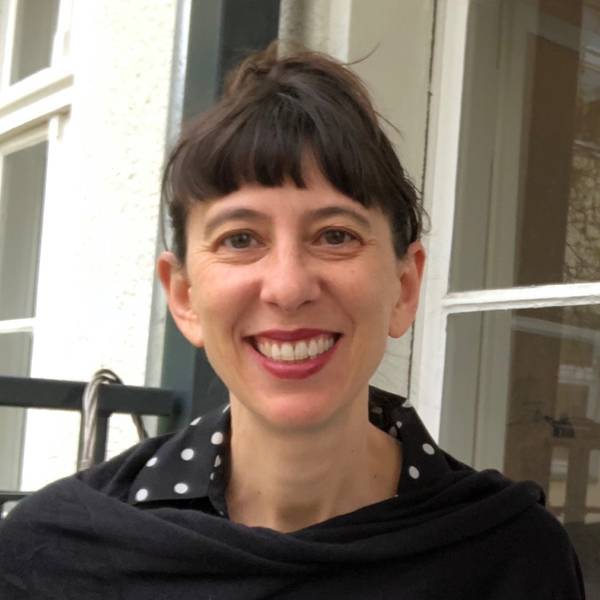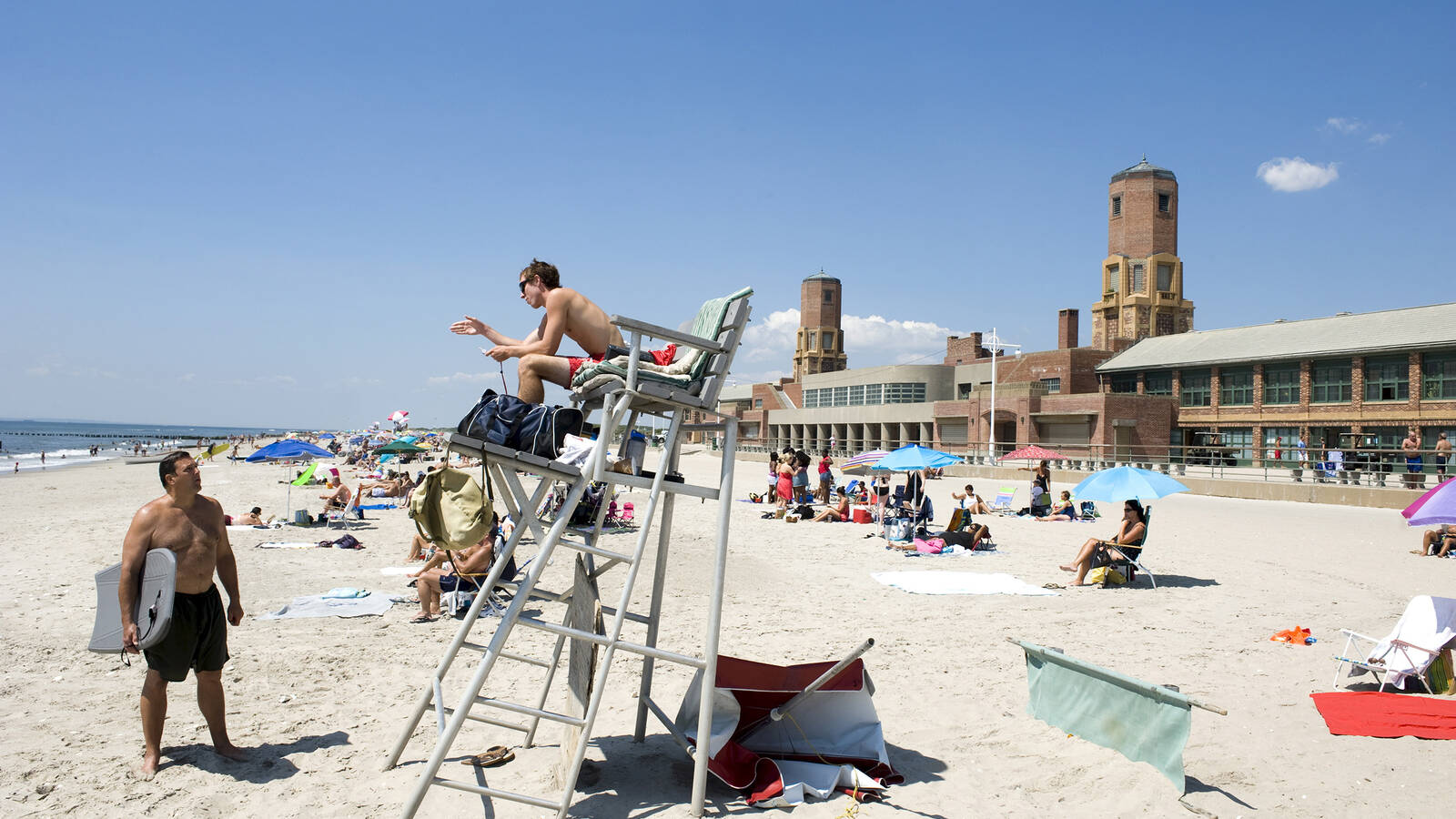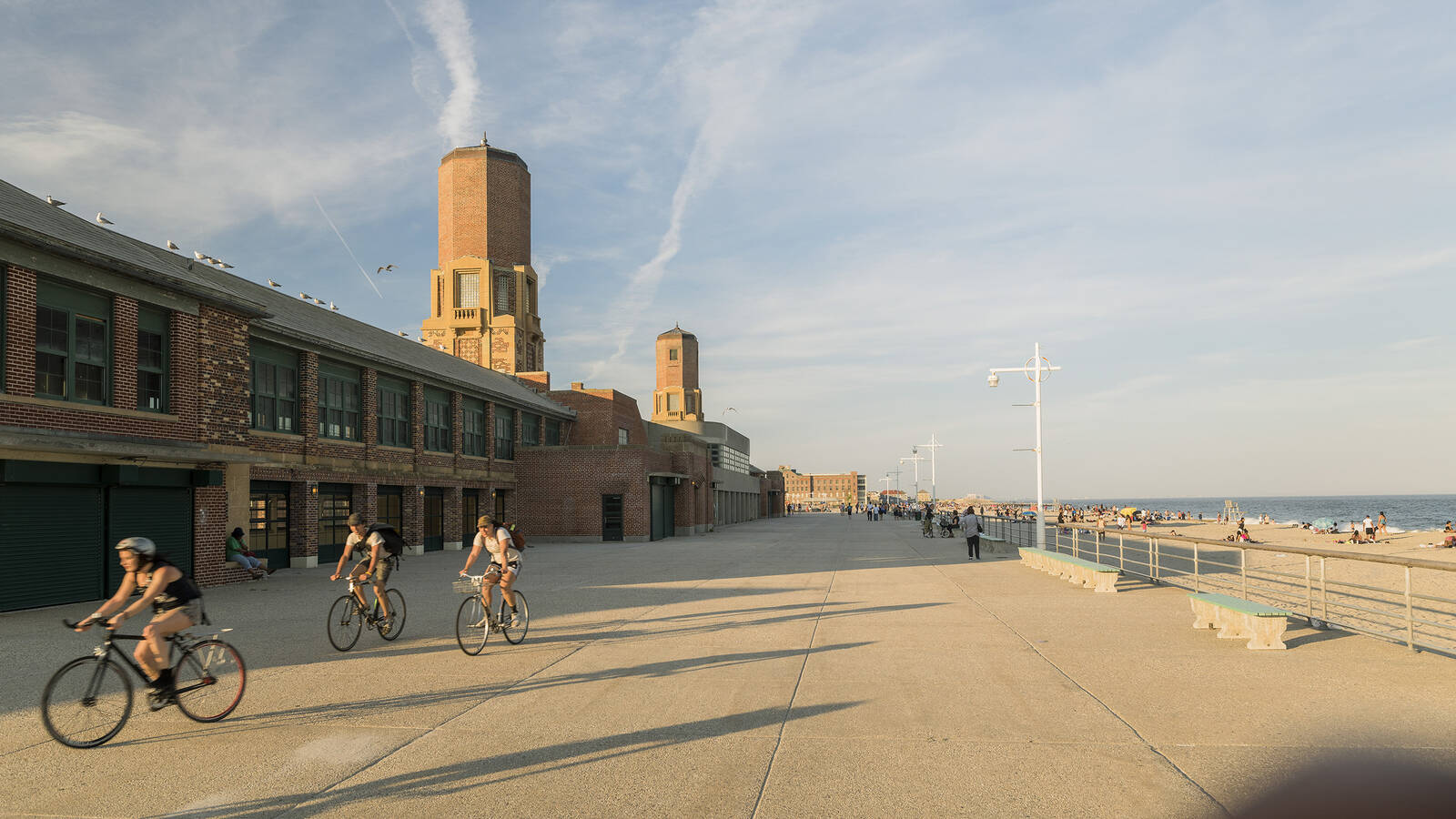Summer 2023
A Greenway for the People
How a 28-mile loop around Jamaica Bay is changing the face of Gateway National Recreation Area.
In April, my 11-year-old daughter, Mae, and I spent a glorious week in New York City. We caught up with friends and family, saw two musicals, visited a couple of museums, had Chinese hot pot in Sunset Park and brought sketchbooks to the Brooklyn Botanic Garden.
It was a delight — all of it — but the centerpiece and crowning achievement of the trip was a daylong bike ride through the Brooklyn and Queens section of Gateway National Recreation Area. A few basics for those not familiar with the park, which includes many New Yorkers, as I discovered: A 27,000-acre urban oasis established in 1972, Gateway straddles three boroughs of New York City and one county in New Jersey. The bike ride Mae and I had planned was along the Jamaica Bay Greenway, a 28-mile protected path for cyclists and pedestrians that encircles Jamaica Bay, a large estuary on the edge of the city.

Your Mileage May Vary: 9 Parks to Explore Without a Car
Spend time off the beaten path — literally. These 9 national park sites offer slower, quieter, human-paced alternatives to automobile-powered excursions.
See more ›The greenway has been a passion project of my NPCA colleague, Lauren Cosgrove, who has a view of the bay from her home and has been advocating for better transit to, from and around Gateway for a decade. The vision she shares with other activists, community groups and elected officials includes better bus and ferry service — and improved bicycle access. As Cosgrove explained to us, though work began on the greenway in the early 2000s, the full loop was only completed over the last five years. The current project phase includes safety improvements and the addition of on-ramps that link neighborhoods to the park.
“A greenway is only as good as the ability to get to it,” said Robert Freudenberg, vice president for energy and environment at Regional Plan Association, a nonprofit long involved in planning the Jamaica Bay Greenway.
Between improved access and the pandemic bike boom, greenway usage is way up, as anecdotal evidence and early data suggest. That means everyone from mothers with strollers to long-distance bikers is using the path, and more people are getting into the nooks and crannies of Jamaica Bay, which historically has been hard to explore without a car. “A greenway and Jamaica Bay are like a match made in heaven,” Freudenberg said.

ILLUSTRATION BY KAVEL RAFFERTY
Given the boosterism of enthusiasts and the enticing blue skies that greeted Mae and me on a chilly morning, I had high expectations for the day. We grabbed bagels and hopped on the subway for the hour-ish ride from the Upper West Side to Sheepshead Bay. The proprietor of Brooklyn Bikery outfitted us with bikes, locks and helmets —$80 for everything — and Cosgrove rolled up shortly after. We headed east, slipped onto a new two-way path and on-ramp, and we were off.
I could feel myself grinning as I breezed along, my eye on Mae’s bouncing pink backpack. To our right, grasses and cattails bowed and bobbed, and the water glimmered; to our left, a steady thrum of traffic coursed by; beyond that, I could just make out the hazy city skyline. On one of the day’s first bridges (there would be eight), we pulled over so Cosgrove could show us a few landmarks, including the observation tower at Kennedy Airport. As she pointed, a spandex-clad biker whizzed by angrily. “Nice place to take a photo, you f—— morons!” he shouted, a Brooklyn greeting I managed to capture on tape. We laughed, shrugged and hopped back on our bikes.
A few miles later, we stopped at the Canarsie Pier. Terri Carta, executive director of the Jamaica Bay-Rockaway Parks Conservancy, later told me that she especially loves the greenway stretch leading to the pier. “All of the sudden you have this giant sky,” she said. “And you see all of Jamaica Bay in front of you. It’s hard to imagine the density of the city behind you when you’re looking at the vastness of nature in front of you.”
Some of the access issues that have long plagued Gateway originated decades ago during the tenure of Robert Moses, New York City’s famous planning czar. Moses’ legacy is complex, but suffice it to say that he is responsible for creating many of the public parklands we were riding through and that he also prioritized car travel to those places and cut off many residents’ waterfront access.
One of several recent victories for previously landlocked areas was the 2019 opening of Shirley Chisholm State Park, which now connects the Spring Creek and East New York neighborhoods to the bay. Built on two former landfills, the 407-acre park features coastal meadows, wetlands, woodlands and 10 miles of trails.
We briefly dipped into Shirley Chisholm park before heading onward to Howard Beach, where quiet streets are lined by tidy homes — and more than a few McMansions. The next bit, Joseph P. Addabbo Memorial Bridge, was the only scary part of the ride. The bikeway here runs adjacent to a loud stream of fast-moving cars, and I had some heartburn when Mae, whose energy was flagging, stopped smack in the middle of the bridge. Fortunately, a plan is in motion to move existing barriers to separate bikes and cars, a project backed by NPCA staff, who successfully pushed for federal funding.
In the summer, crowds flock to Jacob Riis Park, which boasts one of the biggest parking lots in New York City.
©STEFAN FALKE/LAIF/REDUXThe Art Deco batthouse at Jacob Riis Park is in the process of being rehabilitated.
©SASHA MASLOV/THE NEW YORK TIMES/REDUX;We had one more stop before lunch: the Jamaica Bay Wildlife Refuge. A 12,600-acre space with saltmarshes, ponds and woods, the refuge is one of the most significant bird sanctuaries in the Northeast, according to NYC Audubon. As we dismounted, a big, friendly Brooklynite passed by. “Welcome to Broad Channel,” he boomed, his arms spread wide.
I hadn’t realized we were on Broad Channel, the only remaining inhabited island on the bay. After leaving the refuge, we biked through the little village, where houses stand on stilts and a shop called Vape Bait & Tackle is open daily. One long bridge later, we finally reached Bungalow Bar, a restaurant on the water that Cosgrove frequents. “Never disappoints,” she said, as reggae music played on the deck and we tucked into crabcakes.
Bike Lanes Rising
With a flat section ahead and most of the ride behind us, Cosgrove assured us that the rest of the route would be easier, and it was. Soon, we were riding along on the beachside boardwalk in the Rockaways as seagulls, which had provided the soundtrack all day, swooped around us. Rebuilt in the wake of Hurricane Sandy, the boardwalk is wide and inviting, as is the long sandy beach, which was practically empty on a windy April afternoon. It was pleasantly jarring to be suddenly meandering along the ocean here, a surfing hotspot come summer. I felt like we were biking through movie sets, as we crossed from one neighborhood and ecosystem to the next.
Our final seaside stop was Jacob Riis Park, the beloved “People’s Beach,” which sometimes gets so packed that strangers find their towels touching. The enormous, long-shuttered former bathhouse here is being restored and will boast restaurants, a hotel and a pool when it reopens — perhaps as soon as next summer.
We were almost done. We crossed the Marine Parkway-Gil Hodges Memorial Bridge, a Tinkertoy-like metal structure that had been our North Star for much of the day, and entered Floyd Bennett Field, the city’s first municipal airport, now home to a (currently closed) campground and a collection of historic aircraft. Several neglected hangars sit vacant, but plans to restore them using Great American Outdoors Act funds are taking shape.
Meanwhile, work on the greenway, which is funded and overseen by a mix of public and private partners, carries on. In addition to safety and accessibility fine-tuning, the plan is to fully connect the greenway to a larger network of citywide trails. “As we live in more of a climate-threatened future, greenways can be not just a nice recreational amenity, but a central part of everyday life,” Carta said.

National Parks
You can read this and other stories about history, nature, culture, art, conservation, travel, science and more in National Parks magazine. Your tax-deductible membership donation of $25 or more entitles…
See more ›Outside the Ryan Visitor Center at Floyd Bennett, Cosgrove picked up the theme of the future of the greenway and park, which she likes to describe as “a diamond in the rough.” She was waxing poetic about how Gateway has potential to be as grand as Yosemite when Mae politely piped up. “Are you ready to keep going?” she asked.
We were. We reached the bike shop around 5 p.m., tired but exhilarated. Mae was very proud.
The owner offered us a ride to the subway, which we happily accepted, and we were back at the station in a flash. I had plenty of time on the Q train to think about Cosgrove’s bald enthusiasm. Yosemite may have waterfalls and mountains, but Gateway had served up different thrills: ospreys and gulls, waves and wetlands, startling viewsheds and the kindness of strangers (the “moron” guy notwithstanding). In short, it had been a dreamy park day and one of the coolest bike rides I’ve been on. I stared contentedly out the window as we hurtled toward Manhattan, my daughter resting on my shoulder and the lowering sun washing us in light.
About the author
-
 Rona Marech Editor-in-Chief
Rona Marech Editor-in-ChiefRona Marech is the editor-in-chief of National Parks, NPCA’s award-winning magazine. Formerly a staff writer at the Baltimore Sun and the San Francisco Chronicle, Rona joined NPCA in 2013.



